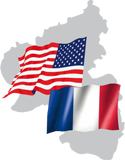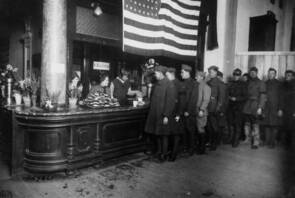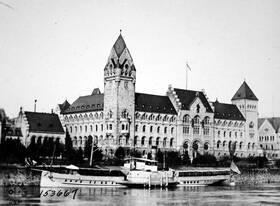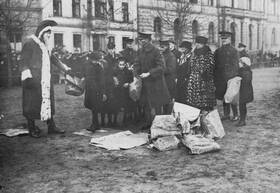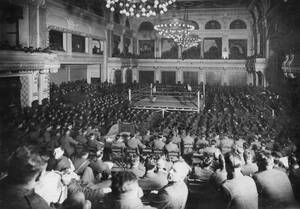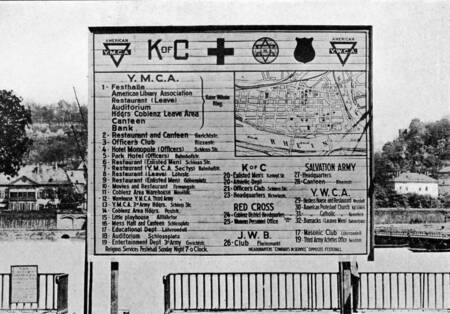Coblenz – A real American City in Europe
The strategic importance of the confluence of Rhine and Moselle, the major railheads, the impressive Ehrenbreitstein Fortress, and the number of barracks and administrative offices were reason enough for the Americans to establish their headquarters in the large Prussian government building on the Rhine river bank in Koblenz. The Hotel Koblenzer Hof, located next door, provided accommodations for officers.
In late 1918, Koblenz and its 56,000 inhabitants had to provide rooms for some 17,000 Doughboys. They were quartered in barracks, fortress casemates, public buildings and private homes.
The “Clemens Square” (Clemensplatz) continued to serve – as it had for the Prussians – as a parade field. The Karthause Air Field was used for aircraft movements. The medical facilities were located on Weißergasse, and the warehouse on Magazinstrasse contained U.S. Army supplies. During these years, hundreds of German civilians worked for the American Forces in Koblenz maintaining the supply chain.
A number of American organizations made life more bearable for the Doughboys, such as the Y.M.C.A., Y.W.C.A., Knights of Columbus, Salvation Army, Jewish Welfare Board and the American Red Cross. The Y.M.C.A. provided music, theater productions, sporting and holiday events, a library, a snack bar and billiard rooms in the Festival Hall (Festhalle). The same types of services were later enjoyed by GIs at the USO centers after World War II. In 1919, the Knights of Columbus opened what was at the time the world’s largest donut bakery in Koblenz. With the help of many German employees, they produced up to 60,000 donuts a day. The donut factory, similarly to a newly-built Coca-Cola distribution center, represented Koblenz’s transformation into a “Real American City in Europe,” as a contemporary newspaper put it. The American fascination with east-Asian cuisine in those days led to the opening of the city’s first Chinese Chop-Suey restaurant, “Pekin” during the occupation.

